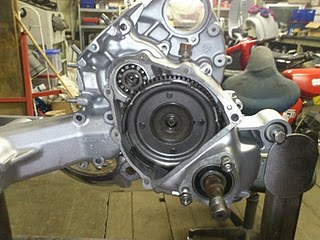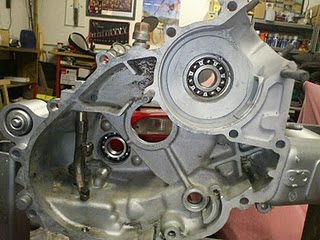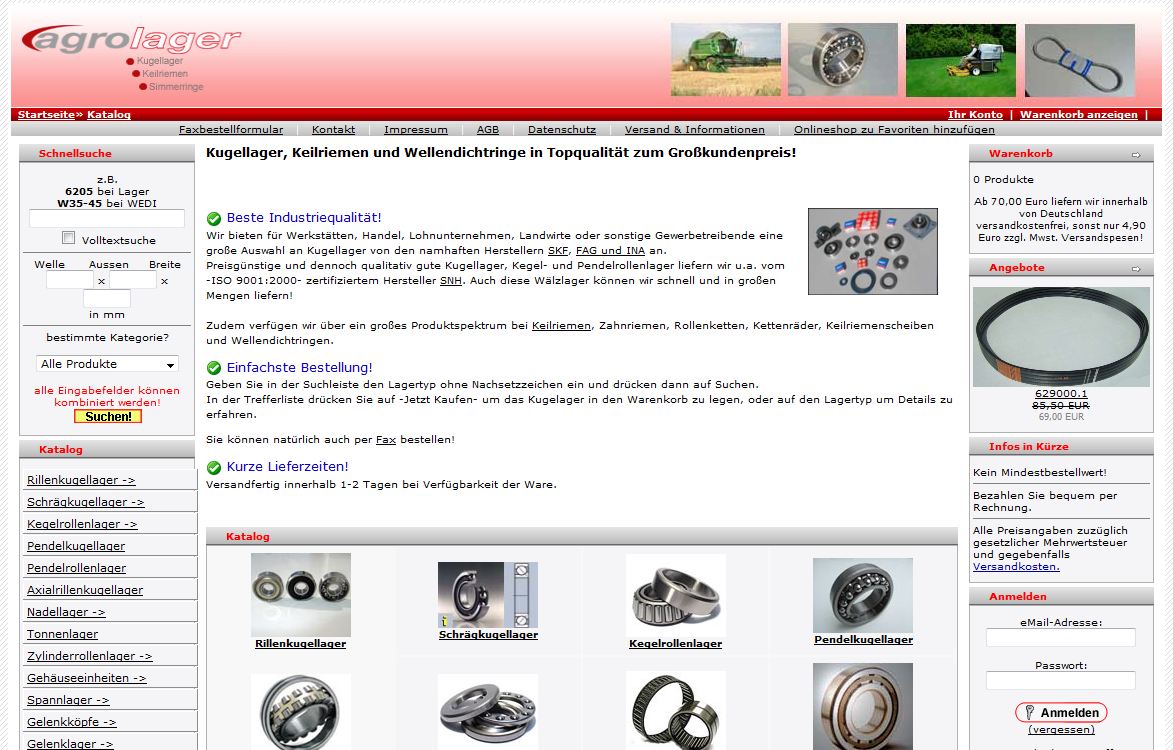Engine > Bearings and Shaft Seal Rings
All Engines:
| Bearings and Simmerrings | Type | Size |
|---|---|---|
| Needle Bearing Drive Shaft: | 4121A (HK1612) | 16x22x12mm |
| Bearing Drive Shaft (Wheel Side): | 6204/C3 or C4 | 20x47x14mm |
| Bearing Auxiliary Shaft: | 6200 | 10x30x9mm |
| Bearing Main Shaft: | 16005 | 25x47x8mm |
| Bearing Crank Shaft (Clutch Side): | 6303/C3 or C4 | 17x47x14mm |
| Simmerring Crank Shaft (Clutch Side): | 22x47x07mm | |
| Simmerring Break Anchor Plate (Rear): | 27x37x07mm |
19mm ("pointy" cone seat):
| Bearings and Simmerrings | Type | Size |
|---|---|---|
| Bearing Crank Shaft (Alternator Side): | 6204/C3 or C4 bzw. NU204 | 20x47x14mm |
| Simmerring Crank Shaft (Alternator Side): | 19x32x07mm |
20mm ("dull" cone seat):
| Bearings and Simmerrings | Type | Size |
|---|---|---|
| Bearing Crank Shaft (Alternator Side): | 6204/C3 or C4 bzw. NU204 | 20x47x14mm |
| Simmerring Crank Shaft (Alternator Side): | 20x32x07mm |
24mm (ETS-Crank Shaft):
| Bearings and Simmerrings | Type | Size |
|---|---|---|
| Bearing Crank Shaft (Alternator Side): | 6005 oder NU1005 | |
| Simmerring Crank Shaft (Alternator Side): | 24x32x7mm |
Bearings/Simmerrings
The right choice of bearings and simmerrings depends on which crank shaft is used. It is basically always recommended to replace the old bearings and simmerrings with new ones whilst the engine is opened up already. Rather replace one bearing too much than to risk any damage to the engine because of having been cheap and lazy.
Even though I have myself used so called chinese bearings before, I would still recommend to use SKF, SNH or any other european made bearing. Not worth being cheap, because re-opening an engine does tike its time and requires again a new set of engine gaskets.
Furthermore please also pay attention to the fact that some bearings have to be fully open (flow through of oil or fuel mix) as well as some may have one side closed (more about it later on). In case you have purchased fully closed bearings - no worries - you can open them yourself. Simply unclamp the ring on the required side by using a small screw driver.
Make sure you don't forget to place any of the shaft seal rings aka simmerrings. Otherwise you suffer a surprise. Especially if lacking the seal ring at the clutch side of the crank shaft. The engine would just run in idle mode but as soon as you open up the throttle the mix would become super rich by adding transmission oil to the fuel mix through the open bearing.
Here you find a list of the respective types and sizes
(Usually the industrial norm number should be enough in order to browse professional shops):
!Pay Attention!
The listed bearing and simmerring sizes are not valid in case of: PK ETS, PK 125 XL, PK 125 XL2. For those please refer to: bearing crank shaft 10-4392 C and simmerring crank shaft (alternator side) 24x35x6.
It goes without saying that any reasonable engine revision requires the check and potential change of any worn out/defect woodruff keys as well as locking washers.
Here is some links to order bearings for a reasonable price (German Shops but international delivery. Not always english language available):
Important advice concerning
bearings:
The crank shaft bearings do usually work with such high RPM that the closed version which is pre-filled with grease does not withstand the high velocity and power and thus cannot guarantee the needed lubrication. That is the reason why the bearing at the alternator side is basically perfused by fuel mix in order to lubricate it (check out the little hole drilled inside the housing above the bearing). The bearing at the clutch side is lubricated by transmission oil.
Crank Shaft-Alternator Side: Must be open in order to secure lubrication. The simmering seals against the alternator and prevents leakiness.
Crank Shaft-Clutch Side: May theoretically remain closed at the crank shaft side because of the simmerring which has to be set. Must remain open towards the clutch side in order to secure the lubrication by the transmission oil.
Drive Shaft: May or rather should be closed towards the brake anchor plate. Supports the simmerring in its work to prevent transmission oil from leaking out. Must remain open towards the transmission side in order to secure the lubrication by the transmission oil.
Input Shaft: Rather thin bearing (8mm) compared to the other types (14mm). Must be fully open to both sides as the transmission oil has to be able to flow through.
All bearings that are placed inside the engine housing with one side facing towards the transmission (exposed to transmission oil) have to be fully open. That goes for ordinary bearings as well as needle bearings anyway.
Please make sure that when opening a closed bearing (as described previously that is not an issue) that you completely remove the grease from inside the bearing. Helpful can be a small brush, thinner and compressed air. BUT never ever accelerate a 'dry' bearing with the compressed air as this could potentially result in a defect bearing!










